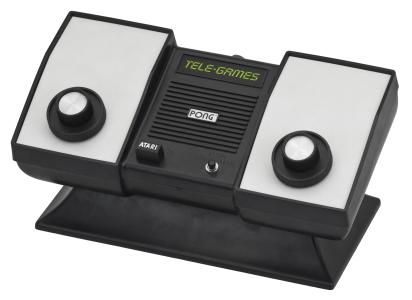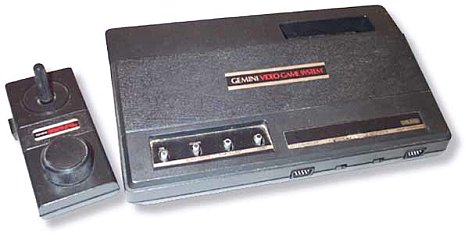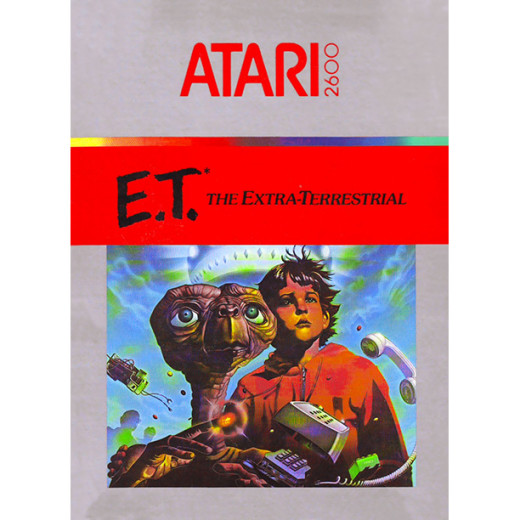Archive
The origins of Home Game Console wars, by John Hancock
John Hancock generously lent some time for us to cover some very cool early history of home gaming consoles, and here is his article on the subject at hand. Thank you very much sir! – Thor
It is hard to believe that videogames have been commercially available for nearly 40 years. A lot has transpired in that time, and a lot of history has been written on the matter. Recently I noticed a trend in newer gamers that have started gaming in the mid 90s. Many of them admitted that their first videogame experiences were with systems such as the Super Nintendo and the Sony Playstation. For many, their whole experience of gaming began with a Nintendo System. From this observation, there is a ton of early videogame history that is often forgotten about or ignored due to it happening before people were gaming now were born.
EARLY DAYS
Believe it or not, commercial video gaming goes back to 1972. The first videogame console was designed by Ralph Baer, considered the “Godfather of Videogames”. Released by the company Magnavox, the crude first generation game console ran off of batteries and looked more like a vacuum cleaner than a game console. The console came with a series of game cards that when inserted into the game system, turned the system on. The primitive graphics of the system were used in conjunction with color overlays that were placed on the TV set. The system went on to sell approximately 330,000 units and was discontinued in 1975. The Odyssey did not even have a microchip in it!
The Success of Pong
While Magnavox was first to produce a home console, a small company at the time by the name of Atari was to improve upon the idea and release its own version of gaming. Atari became famous with the success of its Arcade game Pong, an action game of just hitting a ball between two bars. After a couple of years of success with Pong in the arcades, Atari created a home version of the arcade game and marketed the system to larger retail chains before finding their first buyer…Sears. The Sporting Goods Department of Sears. Working an exclusive deal, Sears was first to market exclusively The Atari Pong System in their own stores under the Sears brand “Tele-games”. 150,000 units were made for Sears, selling at just below $100 each for the 1975 holiday season. The next year Atari released their own Branded Pong unit.
Attack of the Clones
Success can be a tricky thing. Become too successful and watch others come in to swoop in on the craze. Pong was no different than any other hyped product. Within just a short span of a year, other companies began to pop up creating and retailing their own versions of pong units. Varying shapes and sizes, and essentially offering the same game in different packages, From 1976 through 1978, hundreds of console designs from various companies were created to cash in the craze. Pong Clones were made around the world, some with really unique designs. The market came crashing down for Pongs by the end of 1977, when Atari released the home console that would change the world.
The Slow Rise of the Video Computer System(a.k.a. the 2600)
Atari was not to first create a home console that could play different games on cartridges. That distinction belongs to another company, called the Fairchild Channel F, released in 1976. The system could play distinct different cartridges, which were brightly colored in yellow plastic. Seeing the sales of Atari Pong diminish, Atari moved forward with its next new home system the Video Computer System seeing that pong units were now obsolete. Being that Atari was a small company needing to be infused with revenue, it was sold to Warner Communications for around 30 million. With the revenue and marketing backing of a much larger company, the Video Computer System was released September 11th, 1977 for $199. The Video Computer System came packaged with two controllers and a pack-in game, combat. While crude in graphics, the VCS provided fast moving action and several game variants for each cartridge. The system initially had 9 games available, known as the “Gatefold 9” due to their gatefold packaging. Cartridges were available for around $30. While the Atari sold better than it competitors, it was considered a semi-successful launch at selling 250.000 units.
The Golden Age of Gaming
The late 70s to early 80s was a great time for gaming. The home market was starting to blossom. A lot of creativity was being programmed into many classic videogames that have helped shape the gaming landscape still today. While the 2600 had an initial slow start, the release of Space Invaders in the arcades really caused a stir. Arcade gaming really began to take off. Classic games such as Asteroids, Defender, and Pac Man made a tremendous amount of money during the heyday of Arcades. There was a growing demand for people to play these games at home on their home console. In 1980, Space Invaders was “ported” to the Atari 2600. While the graphics were more primitive than the arcade counterpart of the same game, the gameplay remained the same. In 1980, Space Invaders alone went on to help Atari sell over two million units of the 2600. The success of home gaming was also not just the 2600. Magnavox Odyssey 2 was released in 1978 and went on to sell about 2 million units. In 1980, Mattel released the Mattel Intellivision and focused on sport titles and enhanced graphics. The system went on to sell over three million units. While other companies celebrated a temporary lucrative market for the home console industry, Atari was the one that owned many of the exclusive rights to successful arcade games. For many gamers, the only way to play certain arcade games was to play them on the Atari 2600.
Market Crash
The North American Video Game Crash of 1983-1985 changed the face of the games industry forever. In just two brutal years, the market went from 3.2 billion annually to 100 million in sales. No one single event caused the crash, but rather a multitude of events combined together to slam the industry, wreaking havoc and despair for many companies. Beginning in the later part of 1982, things looked hopeful. Atari released the long awaited sequel to the VCS(2600), called the 5200. The system ended up being a real dud, compounded with multiple problems. The main problem with the system was its controller, which was prone to breaking easily, along with a non centering joystick that made control difficult. Customer feedback about the system was less than stellar and sales were flat. After the success of Activision and the approval from courts for companies to create third party games for 2600, several startup companies came out of nowhere and were producing less than quality 2600 games. Atari was being hit from all sides. New arcade games were not drawing in the revenue that previous games were. Several arcades that were opened just years before started to close around the United States. A gaming glut was starting to appear in the home market. Atari own 1st-party titles were also falling flat. Lackluster titles such as E.T. were overproduced and over marketed to the mass audience. Millions of ET cartridges went unsold. In a move to recoup costs and sell current supplies of games, several retail outlets starting slashing prices of games down to mere dollars.
-John Hancock, 7-24-2013
Boy, I remember that crash when I was little. I had the interesting experience of getting into gaming just around that time. When I was about 6 years old in 1983 to 8 years old in 1985, I remember being able to go into Kay-Bee Toys and other little toy/game shops, and picking up video games for 50 cents, a dollar, and so on. Many of the titles were terrible, but the sheer volume of old unsold games was astonishing. Then I remember seeing the games disappear form those shops for a while, and I started gaming in earnest on my Atari 8-bit home computer and friends Commodore 64 machines, having to find titles at computer stores or sometimes seeing them at larger retail outlets. In my memory, the Atari 8 bit, Commodore 64, and Apple II systems sort of side-stepped the console crash due to their perceived value as more than gaming systems (although I of course did little more than play games on them, aside from messing about with Basic and some art/music programs). It wasn’t until the NES and Sega Master system appeared in wide release in the later 80s that I saw a true resurgence in console gaming, and it was bigger, better, and here to stay for the long haul.
-Thor
Thank you John!







